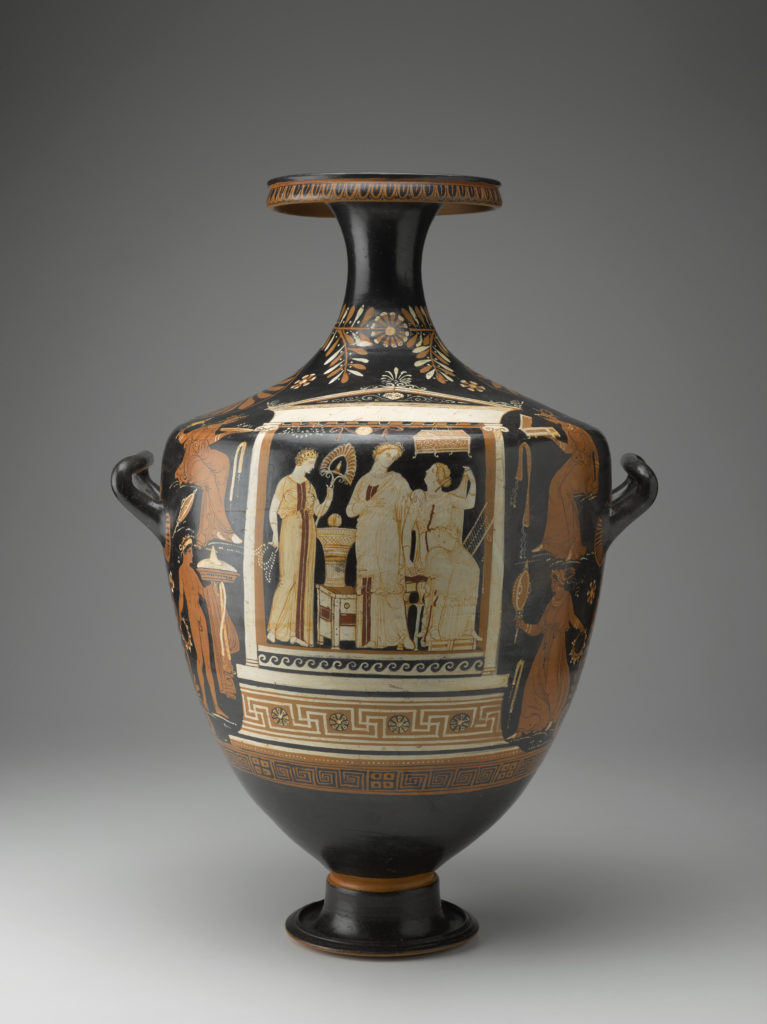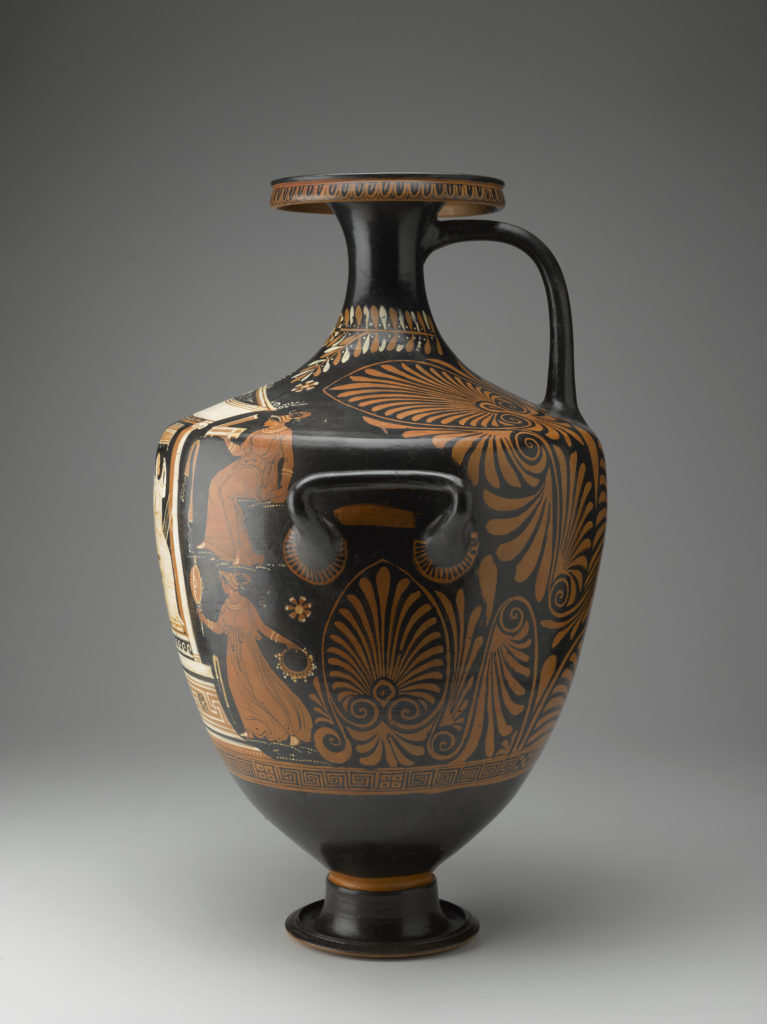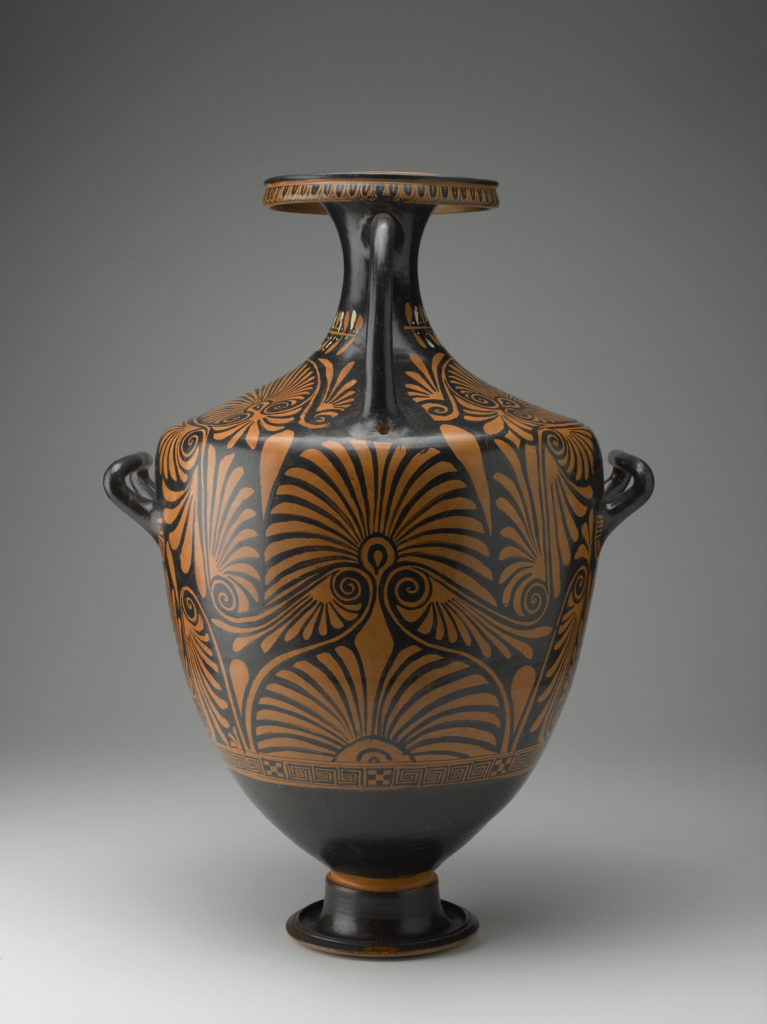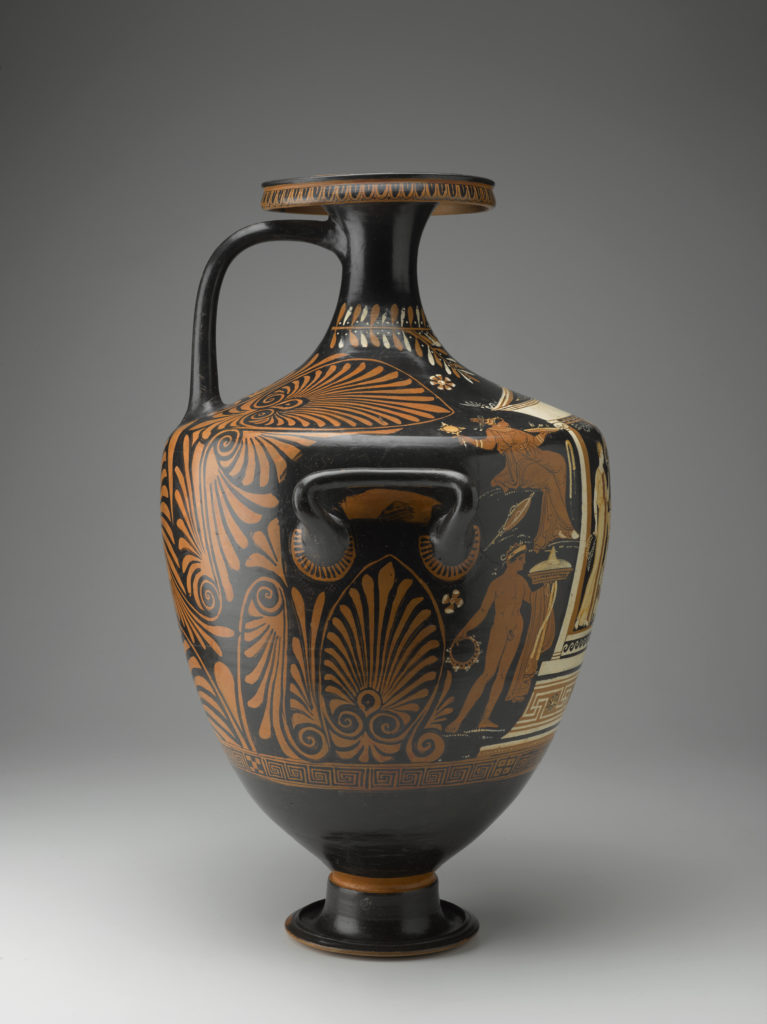Hydria (work of art)
Información sobre la obra de arte
Ideas clave sobre esta obra de arte
- Hydria is decorated with a funerary (funeral-related) scene. Two female figures and a fan-holding servant are depicted standing inside a naiskos, a type of tombstone in ancient Greece that resembles a small temple. Four mourners surround the naiskos and carry offerings for the deceased.
- Women were considered “impure” in ancient Greek culture, so they could attend funerary rites and be close to dead bodies (also thought to be impure). Women were responsible for bathing, anointing, and clothing the deceased, and they often served as professional mourners for the dead and presented the offerings.
- A hydria was a common Greek vessel or vase used for fetching and carrying water. It has two horizontal handles for lifting and one vertical handle by the neck for pouring. The hole at the base of this hydria indicates that it was likely not used by the living but intended for use in a tomb. Mourners would have poured liquid offerings directly into the soil through the hole at the base before placing the vessel on the grave as a type of marker or monument.
- The creation of this hydria can be traced to an artist known as the Patera Painter, who was active in the ancient Apulian region in Italy.
Más información
This hydria, a type of vessel or vase that was generally used for collecting and pouring water, served as a grave marker. Mourners would have poured liquid offerings (such as wine) directly into the soil through the vase and the hole at its base. The decoration of the hydria follows the funerary theme. The central figures stand in an elaborately adorned Ionic naiskos, a tombstone in the shape of an entrance to a shrine. Two women, possibly a mother and daughter, are attended by a servant holding a fan. Objects of everyday life complete the scene: a stool, a basket of yarn on a casket, and personal accessories, including a jewel box, ribbons, festoons, a necklace, and a stringed musical instrument. The white pigment used to portray the figures and objects within the naiskos may have been the artist’s way of indicating that these are relief sculptures decorating the shrine. It is also possible that white was used to emphasize these important figures and provide a decorative contrast to the red pigment that was used for the four mourners—three women and a man—outside the naiskos. They carry offerings of a covered dish, a flat dish, a jewelry box, and a brazier (a pan for holding burning coals).
Hydria is attributed to the Patera Painter, named for his frequent use of pateras (braziers), which are characterized by broad, relaxed figures and outlined by fine, fluid strokes. The Patera Painter was active in an area of Italy known as Apulia, where people from overpopulated areas of Greece relocated to establish new colonies. The ceramic tradition in the Greek colonies was preserved first by importing pottery from the mainland. By the mid-fifth century, Greek cities in southern Italy began producing vases locally, inspired by traditional Greek motifs and shapes as well as by the local culture and natural resources.
tags: family, pattern, ancient Greece
Recursos adicionales
Recursos para los profesores:
- Read an article about the scientific study of ancient pottery.
- Explore the variety of iconography on different funerary vases in Southern Italy and Sicily.
- Learn about the Greek colonies in ancient Apulia, Italy.
Recursos para los estudiantes:
- Read about ancient Greek vases.
- View another vase attributed to the Patera Painter.
- Watch a video about ancient Greek colonization.




